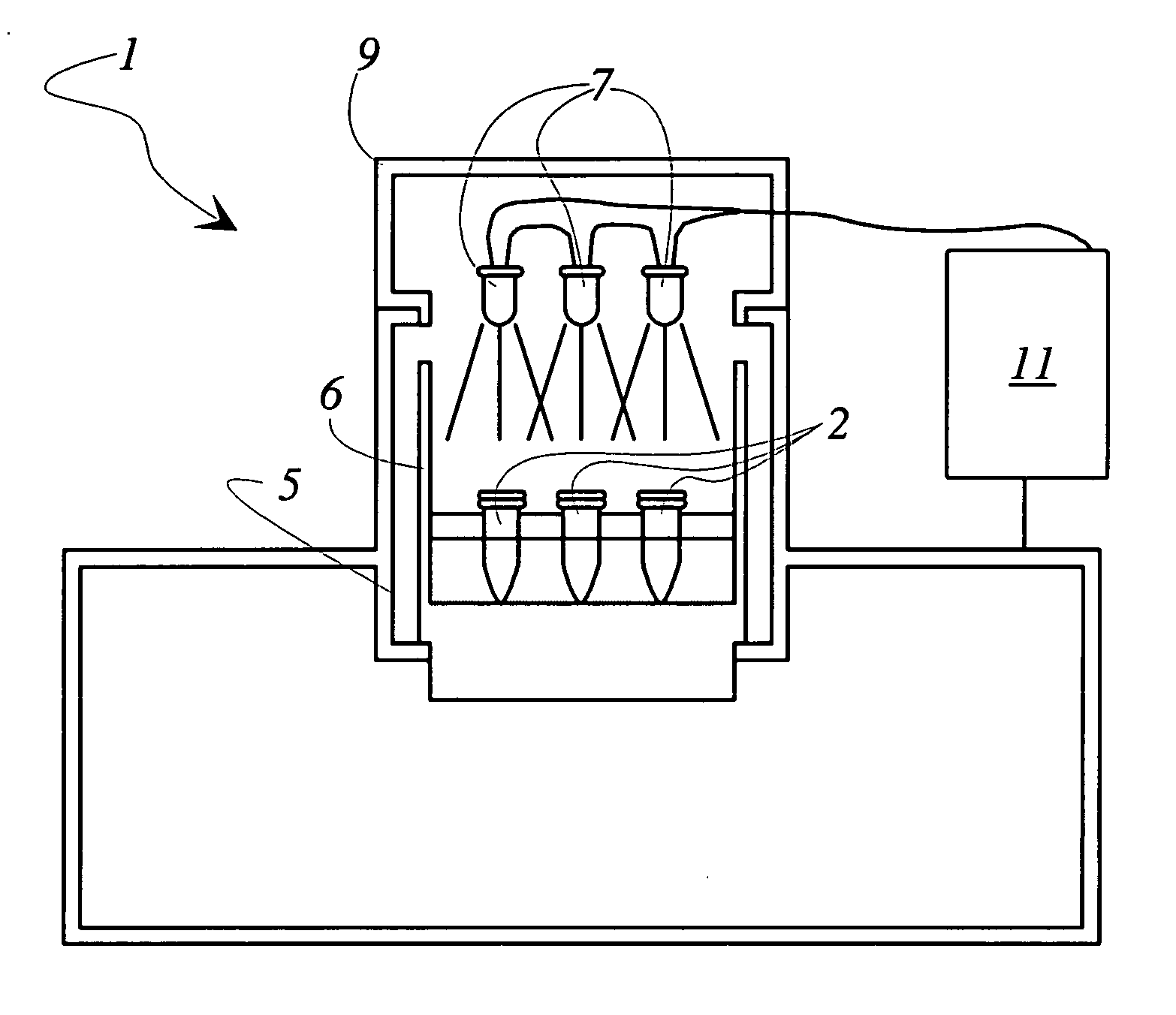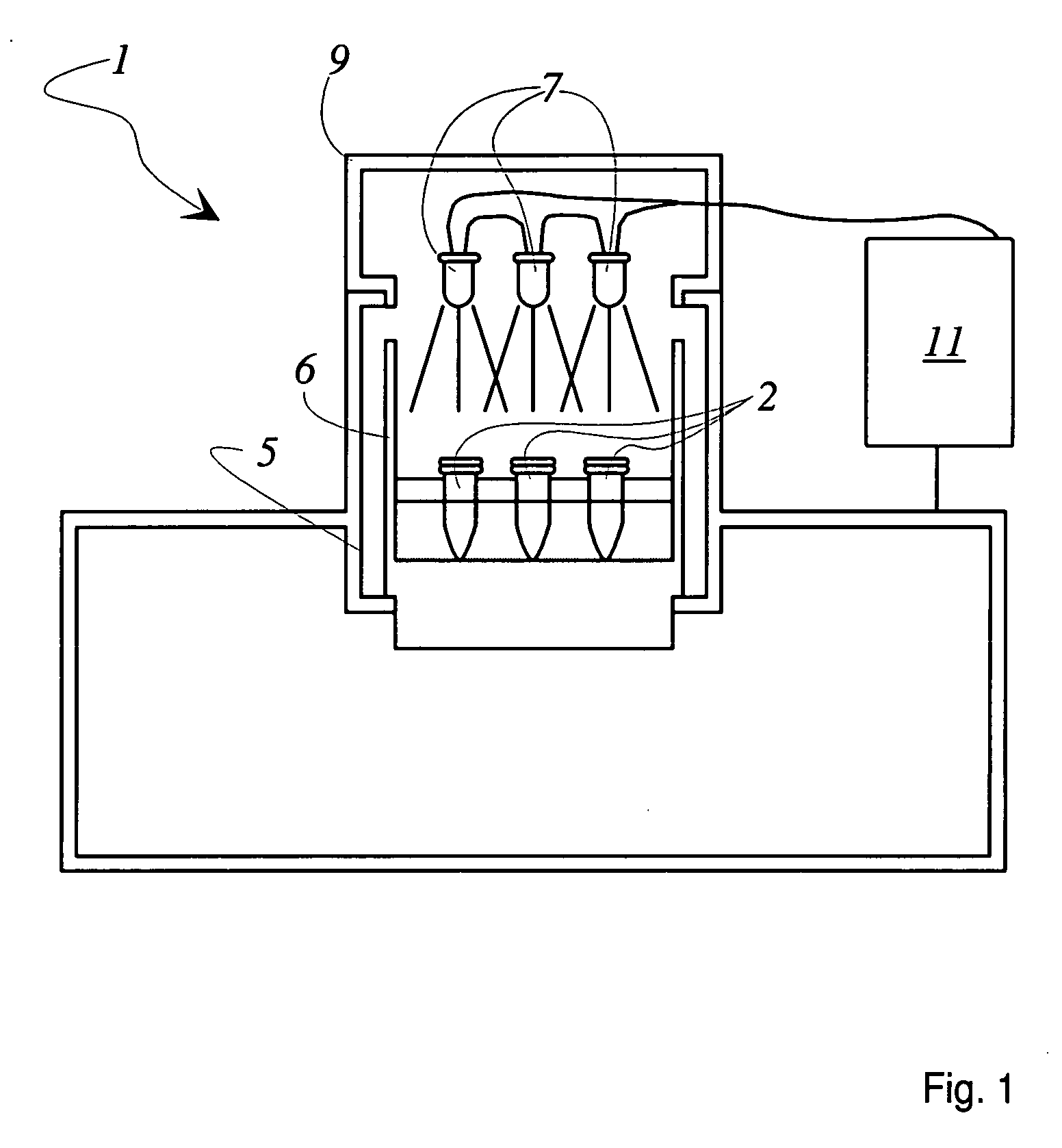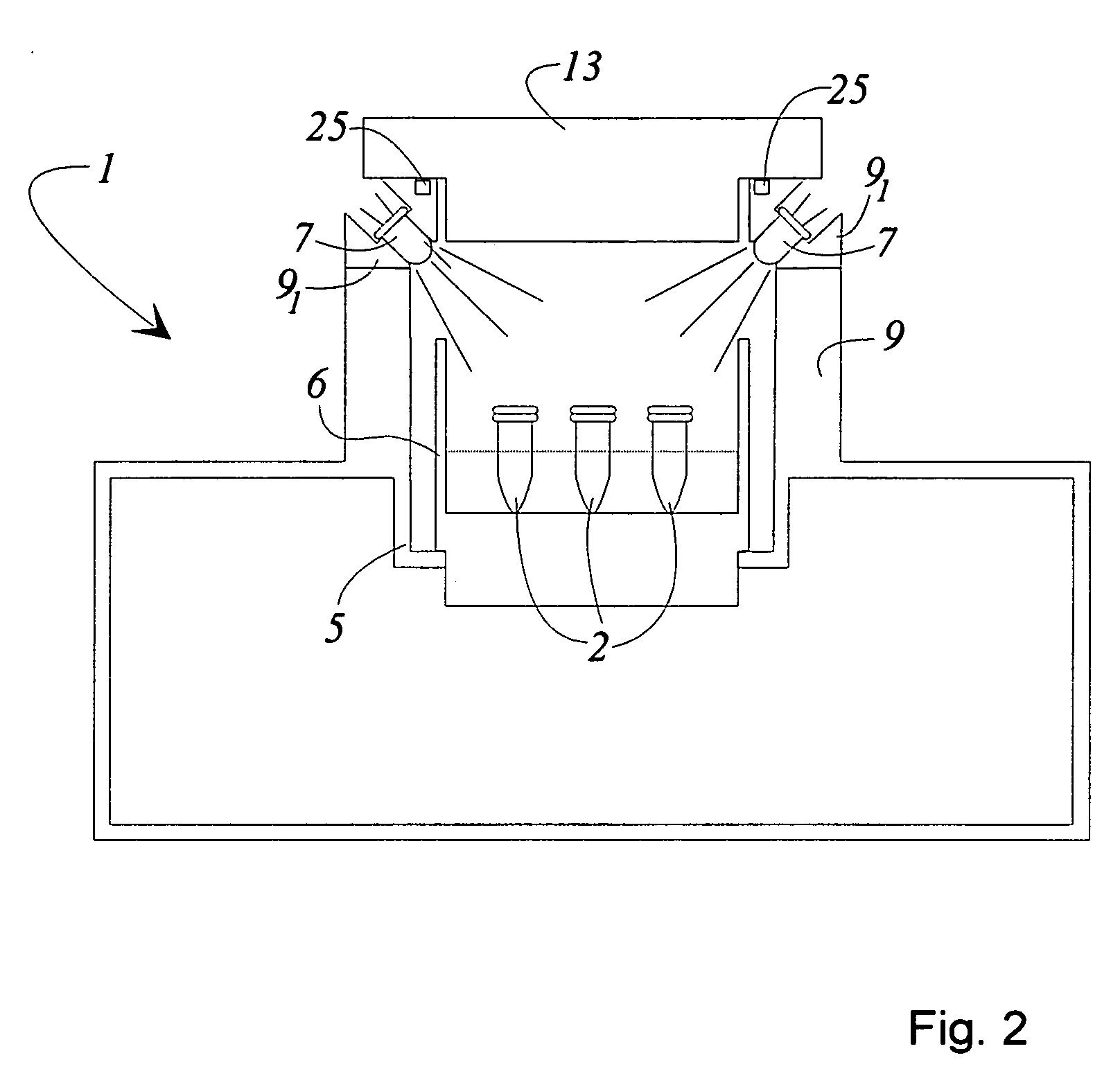Apparatus for the polymerization of biological specimens in the context of cryosubstitution
a biological specimen and apparatus technology, applied in the field of apparatus for the polymerization of biological specimens, can solve the problems of affecting the use of gas discharge tubes, the relatively large volume occupied by lamps used to date, and the polymerization process is too high for the lamp available on the market, so as to achieve safe handling for users, long service life, and easy use.
- Summary
- Abstract
- Description
- Claims
- Application Information
AI Technical Summary
Benefits of technology
Problems solved by technology
Method used
Image
Examples
first embodiment
[0032]FIG. 1 schematically depicts the invention. Apparatus 1 for the polymerization of biological specimens in the context of cryosubstitution encompasses a cooling apparatus 5. At least one chamber 6 can be inserted into cooling apparatus 5. Chamber 6 serves to receive at least one specimen carrier 2 that contains the biological specimen 4. Mounted on a constituent part of cooling apparatus 5 or of cooled chamber 6 is at least one diode 7 that emits light having UV components and is arranged in such a way that the light is directed onto the biological specimens and onto specimen carrier 2. The constituent part in which diodes 7 are mounted is a separate constituent part 9 that is placed, for polymerization, onto cooling apparatus 5. Multiple diodes 7 are provided, and are arranged in such a way that a homogeneous illumination of chamber 6 is achievable. Also provided is a control unit 11 that controls diodes 7 and cooled chamber 6. Light-emitting diodes or diodes 7 that at least p...
second embodiment
[0033]FIG. 2 schematically depicts the invention. Constituent part 9 in which diodes 7 are mounted is immovably joined to cooling apparatus 5. Diodes 7 are thus integrated into cooled chamber 6. In the embodiment depicted here, diodes 7 are integrated into a chamber wall 51 of cooling apparatus 5. It is particularly advantageous if cooling apparatus 5 possesses a cylindrical chamber wall 51. Diodes 7 can furthermore be incorporated into a different constituent part 9 joined fixedly to chamber 6, or into chamber 6 itself. For space reasons, here as well it is advantageous to use individual diodes 7 to illuminate predefined positions for the preparations. In the embodiment depicted here, an annular arrangement of diodes 7 having a large emission angle is depicted. This arrangement also allows a homogeneous illumination of the entire cooled chamber 6 to be achieved. In this embodiment, diodes 7 are mounted on a support ring 91, thus yielding the annular arrangement of diodes 7. Diodes ...
third embodiment
[0034]FIG. 3 schematically depicts the invention. Here diodes 7 are integrated into a subunit 17 or add-on unit that is not immovably joined to cooling apparatus 5. Subunit 17 or the add-on unit is placed onto cooling apparatus 5 before polymerization. Subunit 17 or the add-on unit can also be used for other process steps in addition to polymerization. Subunit 17 or the add-on unit can likewise be equipped with other functions, for example with an integrated manipulator 19. Subunit 17 or the add-on unit is used in the final process steps, i.e. before polymerization; the integrated diodes 7 thus make possible (as already indicated for the embodiment described in FIG. 2) a program-controlled polymerization start without direct user intervention. Diodes 7 are incorporated into subunit 17 or the add-on unit of cooled chamber 6. In the form depicted, subunit 17 or the add-on unit encompasses a housing 21 that is equipped with a viewing window 23 through which a user can make modification...
PUM
 Login to View More
Login to View More Abstract
Description
Claims
Application Information
 Login to View More
Login to View More - R&D
- Intellectual Property
- Life Sciences
- Materials
- Tech Scout
- Unparalleled Data Quality
- Higher Quality Content
- 60% Fewer Hallucinations
Browse by: Latest US Patents, China's latest patents, Technical Efficacy Thesaurus, Application Domain, Technology Topic, Popular Technical Reports.
© 2025 PatSnap. All rights reserved.Legal|Privacy policy|Modern Slavery Act Transparency Statement|Sitemap|About US| Contact US: help@patsnap.com



